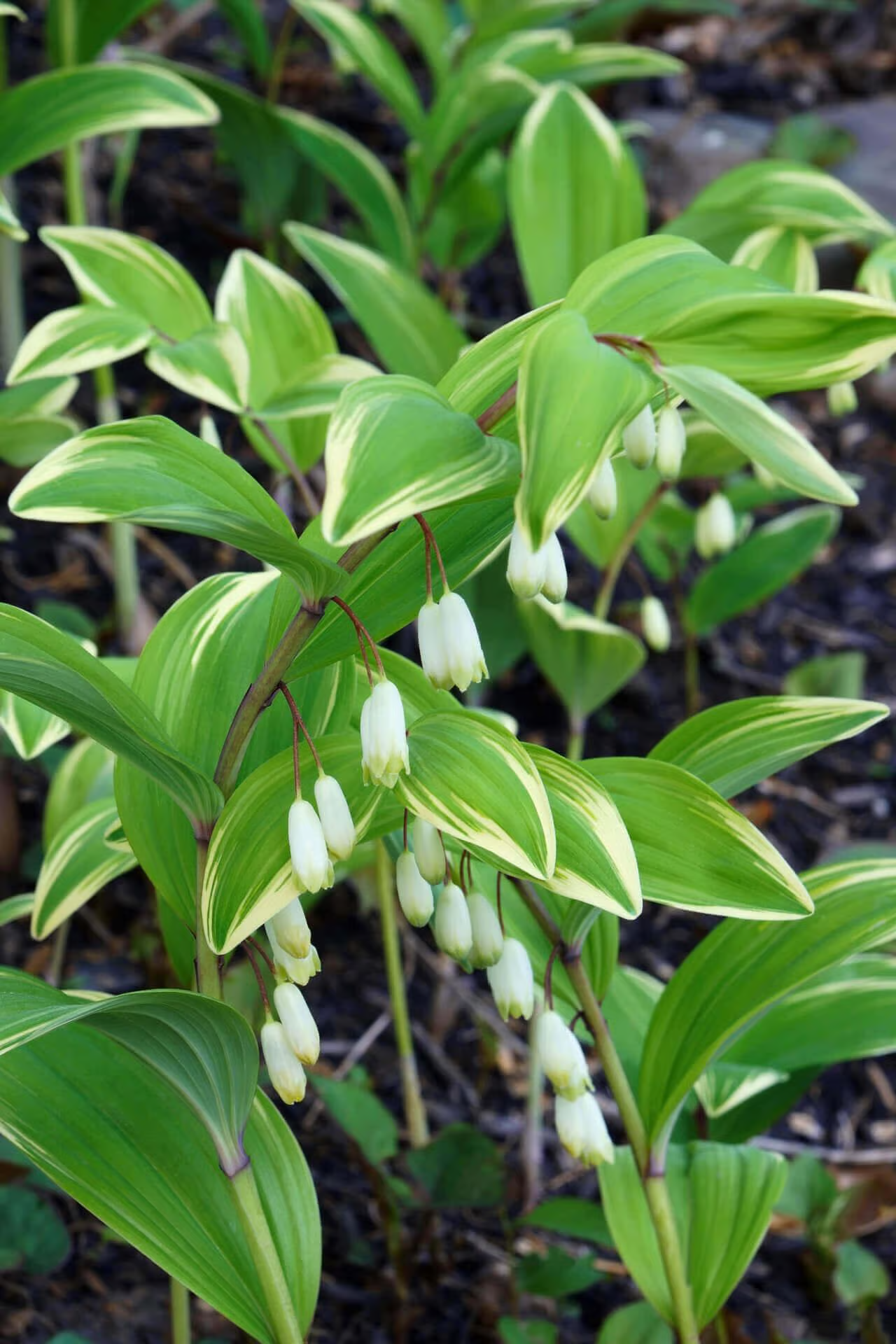
Perennials
Low maintenance and drought-tolerant
Excellent for shaded garden spots
Provides year-round garden interest
Thrives in
ZONE 3ZONE 4ZONE 5ZONE 6ZONE 7ZONE 8ZONE 9Planting Season:
Year-RoundWhen you add one plant to cart, it automatically adds the second one free on Bogo deals.
Solomon's Seal Plant is a graceful woodland perennial known for its arching stems, dangling pairs of bell-shaped flowers, and distinctive, alternate leaves, making it a charming addition to shaded gardens. They offer a range of benefits when incorporated into landscaping projects, contributing to outdoor spaces' natural charm, versatility, and ecological value. With its distinctive arching stems, elegant foliage, and adaptability, this flower brings unique qualities that enhance various aspects of landscape design.
Also known as Polygonatum biflorum, is an herbaceous perennial with three distinct color stages: greenish-white, blue, and gold. Its green leaves comprise most of its total size.
When this perennial initially springs to life each May, it has small, greenish-white flowers. Thanks to its arching stems, each flower hangs down. Later in the summer, blueberries appear. Finally, once it's autumn, the leaves turn a spectacular gold. Although the entire flower is beautiful, the flowering stage is revered and has recently become a favorite in the floral world.
It can reach up to four feet tall, which provides collectors with plenty of its dainty, greenish-white flowers. Due to their uniqueness, these specialty cut flowers are always in high demand. Whether you enjoy brightening up your home occasionally or regularly, you can't go wrong with this flower!
Although it grows naturally in forests, it is also explicitly planted for the floral industry. These perennials and their unusual appearance have quickly become highly desired. They've been used in various floral arrangements, including unique wedding bouquets. Between their stunning appearance and fragrant scent, which mimics lilacs, this flower deserves your attention!
What does the name of these flowers symbolize? Unfortunately, there is no conclusive answer. However, one theory is that the flat, round stalk scars on its rhizomes were once believed to look like the ancient symbol of King Solomon. Nowadays, people are typically drawn to its dangling, greenish-white flowers and graceful arching stems. As a bonus, they can add an unusual structural appearance to any shade garden.
It also has just the look you need if you're planning to build a shade garden. Either way, this perennial won't soon be forgotten!
Does It Like Sun Or Shade
This flower prefers an area of partial to full shade, so the best location for it would be a woodland garden or shaded areas of your backyard.
Where does it grow best?
It thrives well in areas with slightly moist, well-drained garden soils with organic matter. It thrives well in woodland gardens.
What kind of fertilizer is best for it
It grows best with a balanced slow-release fertilizer. Adding a thin layer of compost or well-rotted manure in early spring can also supply it with the nutrients that should support its vigorous growth.
Does it multiply
It repopulates through rhizomes. It will germinate and grow into clusters, which are very easy to transfer and extend around your yard.
What Grows Well With It
Solomon's seals are ideal for planting with other shade-loving flowers like ferns, hostas, and astilbes. It also works well with the spring bells such as trilliums and violets, making the woodland garden very beautiful.

Bloom Season
Spring
Bloom/Foliage Color
White
Height at Maturity
Over 12"
Care
Solomon's Seal thrives in well-drained soil with consistent moisture. Mulch near the plant to maintain moisture and suppress weeds. Prune dead or damaged stems in early spring to encourage new growth. Watch for nuisances like spider mites and treat them as needed.
Plant Reproduction
Solomon's Seal Plant spreads slowly by creeping underground stems called rhizomes.
Planting bare-root perennials is best in any season if they are dormant; we only sell dormant plants. Planting them year-round is also excellent if you can get dormant perennials. When your bare-root perennials arrive, soak the roots in water for a few hours to rehydrate them. Lant by digging a hole wide enough to spread the roots comfortably and deep enough to place the top portion crown (where the roots meet the stem) at or slightly above ground level. Position the plant in the hole, backfill with native soil, and gently firm the soil around the roots—water well after planting to settle the soil around the plant and eliminate air. Apply a 2-3 inch layer of mulch to keep weeds at bay and moisture locked in, keeping the mulch away from the crown. Irrigate plants regularly during the first few weeks of drought; never water in full sun, and water late in the evenings to ensure the roots are established well. Fertilize sparingly in the first year, using a balanced, slow-release fertilizer in subsequent years as needed.
Shipping date depends on the date displayed and chosen when you order from the product's page.
We only accept returns on plants verified dead. If you think your plants have died, we offer a 1 year warranty, please use use this File a Claim Link to verify dead plants and start with return warranty process.




Elegant Foliage:
Graceful, arching stems with lush green leaves add refinement to shaded areas.
Charming Flowers:
Delicate, bell-shaped flowers dangle from the stems, offering subtle beauty.
Shade Tolerance:
Perfect for low-light areas where other plants may struggle.
Seasonal Interest:
Unique flowers and attractive foliage provide beauty throughout the growing season.
Caring Tips
Each box contains detailed care instructions and information about your product. But here's the basics.
Care Tips
Solomon's Seal thrives in well-drained soil with consistent moisture. Mulch near the plant to maintain moisture and suppress weeds. Prune dead or damaged stems in early spring to encourage new growth. Watch for nuisances like spider mites and treat them as needed.
Light Requirements
Solomon's Seal prospers in partial to complete shade. It prefers dappled sunlight or light, filtered shade, making it ideal for woodland gardens or shaded areas. Too much unaffected sun can burn its leaves.
Hardy Planting Zones
3 • 4 • 5 • 6 • 7 • 8 • 9
How often should I water my plants?
How do I know if my plant is getting too much or too little sunlight?
What should I do to prepare my plants for winter?
What are the signs that my plant needs fertilizing?
How can I prevent pests from damaging my plants?
How do I choose the right plant for my climate zone?